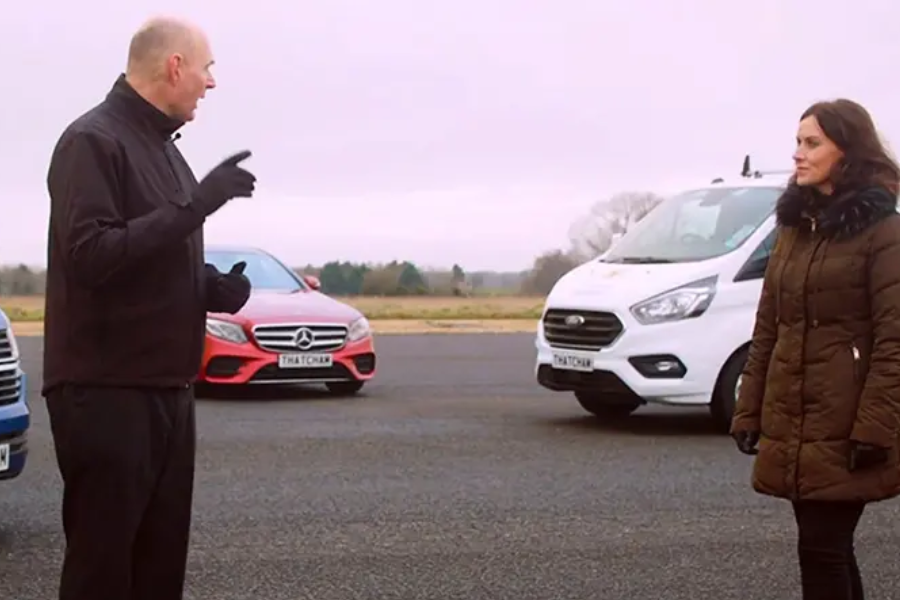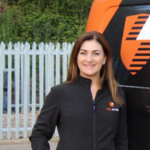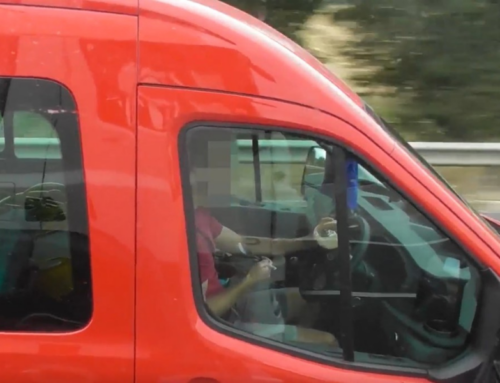This month’s article on Vehicle Security, for those who manage drivers, comes to us from Matthew Avery, Director of Strategic Development at Euro NCAP
Vehicle Safety – your fleet
COVID – remember that? It has made a huge impact on the way we live and work, and one such change has been the rise in e-commerce and home deliveries, mostly by van. Indeed, for those required to remain at home, the only vehicles seen in our cities and towns were often the ubiquitous white van delivering our essential goods.
But what of their safety? Do these vans offer their drivers and other road users the same sort of protection as a similar priced passenger car, or are they stripped out to offer the cheapest solution possible?
In 2018, Euro NCAP analysed the market and revealed a huge discrepancy in the safety equipment between cars and vans, even from the same manufacturer.
The reason was clear.
There little more than lacklustre regulation in the van market, unlike with passenger cars, where the Euro NCAP 5 Star safety rating has been a badge of honour for 25 years. And so, in 2020 Euro NCAP introduced the world’s first van safety ratings. In just 5 years most new vans are now achieving high safety ratings with standard fit equipment, enabling business owners to confidently select vans that offer similar levels of safety protection to that expected in today’s family car.
Why target Van Safety?
Euro NCAP has for many years followed the goal of Vision Zero – that is the target to have no road deaths on European roads.
With van sales making up over 10% of the market – and growing – it became clear that the organisation’s goal could only be achieved if all vehicle types are made safe to both their occupants and those around them, including vans, trucks and, ultimately, buses.
Analysis of real-world data showed that the majority of van crashes occur in urban areas and the resultant killed and seriously injured (KSI) relates more often to those outside of the van – pedestrians or other road users – since the size of mass of a typical van offers better protection than the those in the average car.
Several research crash tests were undertaken, illustrating the issue of “incompatibility” – that is, that the van with its higher mass tends to be more aggressive toward other smaller vehicles, resulting in a higher casualty rate in the opposing vehicle.
Van Safety – ADAS
Further research highlighted a surprisingly very low level of advanced driver assistance system (ADAS) fitted on the typical van – either standard or even as a cost option.
Manufacturers whose passenger cars were achieving robust 5-star performance were fitted with a plethora of active safety systems, as standard. Previous research had demonstrated the high efficacy of these systems, especially AEB that reduces those typical city crashes by over 40% – but this basic equipment was simply not being fitted to vans.
An example of the same manufacture with different safety philosophies between their passenger car and van products.
New Van Tests – safety ratings
In 2020, Euro NCAP introduced the first commercial van ratings to assess and rate safety, allowing users to compare performance between models. The initial ratings focussed on collision avoidance technology commonly fitted to passenger cars. The tests chosen reflected those ADAS tests already used in the passenger car programme. Technologies such as Automatic Emergency Braking (AEB) sensitive to vehicles, cyclist and pedestrians, lane support systems and driver monitoring, which were commonplace on most passenger cars, were evaluated with the aim to encourage manufacturers to at least make these functions a cost option. Creating a market for safety has been one of the major success stories for Euro NCAP, as manufacturers strive for the top five-star rating. It was hoped that van manufacturers would follow suit.
The initial tests saw 19 vans (representing 98% of European sales) evaluated and rated. These vans were fitted with all optional safety equipment available and were tested using the same exacting methods as used in the car programme. The results were initially published as “medals” – Bronze to Platinum to differentiate the awards from the stars of the car programme.
Six vans achieved a Bronze award, 5 Silver and 3 achieved Gold. Five were not rated since their overall performance was too poor to be rated. There were no Platinum awards. And these were vans tested with optional equipment rarely selected by a customer.
Fleets – the New Audience
Most van purchases are to undertake commercial work, some being used by sole traders, but many being purchased by fleets. The law requires companies to consider the driving environment as a place of work, and as such, it should be subjected to the same risk assessments as any other occupation. Until Euro NCAP published these results fleet managers and those responsible for vehicle procurement had little on which to judge vehicle safety, apart from vehicle manufacturer claims.
With the publication of these ground breaking results companies now had access to independent safety information which could be used influence procurement.
By 2023 the European van makers were offering significantly improved vehicles, with the first Platinum award being for the Ford Transit Courier. Several other manufacturers have joined Ford in offering Platinum rated vehicles and almost all manufacturers now recognise the Euro NCAP rating as a badge of honour, even sponsoring vehicles within the programme to promote their performance. The latest vehicles from the leading manufacturers such as
Ford, Mercedes, Stellantis Group and Renault are now regularly achieving high scores with much of their safety equipment now, standard fit.
The programme also raises the issue of safety to fleet managers and those procuring vehicles promoting this as a consideration along with cost and environmental impact. Fewer crashes protect their drivers, reputational risk and keeps expensive vehicles on the road.
With many companies having a minimum 4 Star (or Gold) safety procurement level, manufacturers have responded to this customer pressure and improved the safety of their vehicles, even promoting it in point-of-sale literature. This illustrates the power of these independent ratings, exactly as we have seen in the passenger car market over the last 25 years.
Raising the bar – fleet safety
Following the positive reaction of the van manufacturers, Euro NCAP continues to raise the level of safety on vans with a three-yearly update cycle on all test protocols. Key to this will be to encourage all manufacturers to fit these safety systems as standard on all models throughout Europe (and the UK). From 2027 all the tested systems will need to be standard fit. New functionalities will be required, such as Direct Driver Monitoring systems. This equipment, now fitted to most new cars, actively monitors driver awareness and can identify distraction, drowsiness and even intoxication. These systems can also identify correct seat belt use, preventing a driver from just sitting on a latched belt to silence the warning gong, negating any protection on offer.
Another major leap will be a passive safety assessment. Initially seen as out of scope, new crash tests using state of the art crash dummies will be introduced that reflect those in the passenger car programme using a mobile deformable barrier to represent an opposing car.
Key here is to not only protect the van occupants by improving vehicle structure and restraint systems but also to ensure that the van is not too aggressive (structurally stiff) unnecessarily risking the occupants in an opposing vehicle.
These tests are challenging for the manufacturers and will require structural changes along with new frontal and side curtain restraints further protecting their occupants.
Euro NCAP – fleet safety
The Euro NCAP van test programme has seen manufacturers now offering a level of safety that new car users have enjoyed for many years – it’s a tribute to the industry that they have risen to the challenge.
New tests will further raise the bar with passive safety now playing a role. And the new ratings will even revert to a Star Rating – replacing the medal system.
With the advent of new truck tests to further improve road safety, whether buying cars, vans or trucks, fleet managers now have comprehensive and independent safety ratings that can guide procurement, to help protect their drivers, those that share the roads – and their profits!






